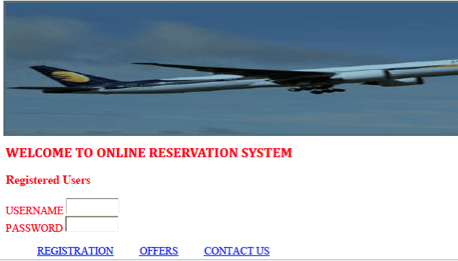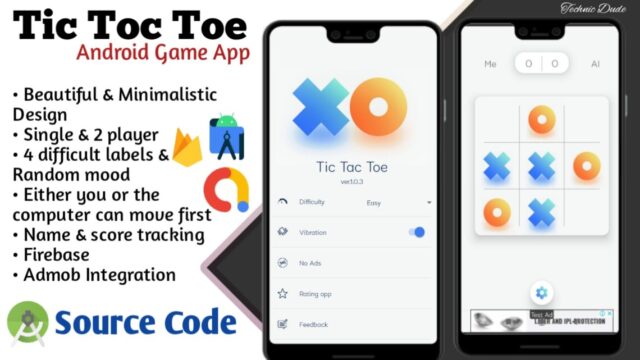This Airlines Reservation System is an integrated passenger processing system developed in Java as a web-based project. The system includes inventory, fares, ticket-less operations and credit card transactions. In this reservation management software, all communications are via TCP/IP network protocol enabling the use of both intranet and internet communications worldwide.
You can download the complete Java source code, project report, documentation files and other necessary project files of Airlines Reservation System in Java from the download links provided in this post. Below, I’ve briefly introduced the project abstract, features and system specifications of this project.
Download Airlines Reservation System Java Project with Source Code, Project Report, and Documentation
About Airlines Reservation System:
The system is based on open architecture, using industry standard equipment and software. The open nature of VRS allows the addition of new systems and features, ensuring that the VRS system can be adapted to keep up with the changing requirements of the airline business.
The VRS suite of software includes the four basic functions of — reservations, flight inventory, fares and ticketing ticket-less module. The main features or the services provided in airlines reservation system are:
- Reservation and cancellation of the Airline tickets.
- Maintain the passengers’ records.
- Report about the daily transactions of the Airlines System.
- Quick Response to the passengers.
- Automation and integration of Airline system functions.
- Higher productivity and effective management
- Security and protection of confidential data.
- Transaction management and routing.
All user/agents are allocated a SINE code, which is used during sine-on and then appended to all transactions carried out by the agent for security purpose . Different security levels may be assigned so that different agents can access different areas of the system and also different records in the case where a travel agent is only allowed to review PNR’s that have been created by that agency.
Flights may be entered as far ahead as required without limitation using the flight inventory GUI. Native transactions support reservations up to 1 year ahead. The flights may be specified within a particular date range and may be used to display different classes of service and different fares within a specific seating class.
In this airlines reservation system, sale from availability when it has been displayed and a simple entry is used to sell seats. A direct sale may be made using a long hand entry if the flight details are fully known.
Modules Overview:
- User registration module: This module is helpful for the registration of the new customer.
- Login module: This module performs the login of the registered customer. In this module Customer-id and password is verified.
- Reservation module: This module performs the reservation of the ticket to the registered module.
- Cancellation module: This module performs the cancellation of the reserved ticket.
Existing System:
The existing system of airlines reservation is time-consuming and not economical for both the airlines company and passengers. Reservations do not support up to 1 year. Accessing and updating the system is slow. And, overall, the system is not web-based but is file-based processing.
Proposed System:
Using the distributed technology we can handle these problems easily. In general, a distributed process means that a program in execution makes use of resources in other machine. The two technologies for distributed processing available are J2EE and .NET.
In this Airlines Reservation System Project, J2EE is used for managing distributed systems. So, even if the Airline system has lot of branches or if they are located at different places, we can effectively handle the management of service.
The proposed system is a web based system that allows online reservations. The system is divided into three layers namely: presentation layer, business layer and data layer. The presentation layer is at the client side. At the server side, business layer and data layer reside.
The system requires a server side technology for its implementation. J2EE platform is chosen for implementing the system. At server side Servlet plays the role for business layer and JDBC for the data layer.
Advantages of the Proposed System:
- Reservations are supported up to 1 year.
- Accessing and updating the system is fast.
- It is implemented using the concepts of RDBMS.


System Specification:
1. Server: Web logic server is used for recording data through Oracle 8i.
2. Compatible operating systems:
- Microsoft Windows 98(SE)
- Microsoft Windows NT Workstation version 4.0(with service pack 6 or later)
- Microsoft Windows 2000 Professional
- Microsoft Windows XP Professional
3. Hardware Requirements:
- Intel Pentium2 (or compatible) 300 MHz(or higher) processor
- Minimum of 256 MB RAM
- Oracle 8i and Server installation require up to 200MB of hard disk space and for planning purposes, we recommend that users allocate 100MB per system for data base.
4. Client:
- Compatible operating systems:
- Microsoft Windows 98(SE)
- Microsoft Windows 2000 Professional
- Microsoft Windows XP Professional
5. Network Requirements:
User can run the HRMS on a single computer, or across a local area network (running at a min speed of 100 MHz). For access to the server via a LAN, TCP/IP protocol is recommended.
6. Remote Access:
It’s recommended that Microsoft Windows Terminal Services (or a similar technology) is used. Only the highest specification Wide Area Networks will provide sufficient power to connect users directly to the server (i.e. without using Terminal Services).
Conclusion:
This Online Airlines Reservation System Project is a software designed to help the Airline System employees to issue reservation tickets for various air flights. It maintains the records of various passengers and provide quick services to the passengers. You can find out more about the project in the project report and documentation.








